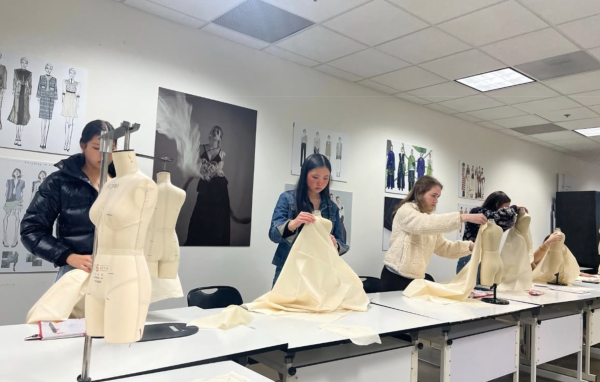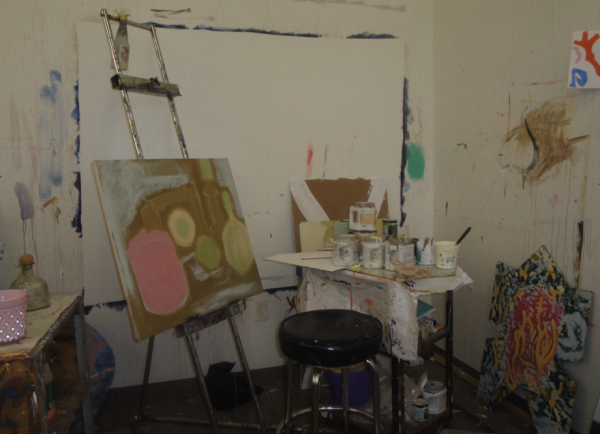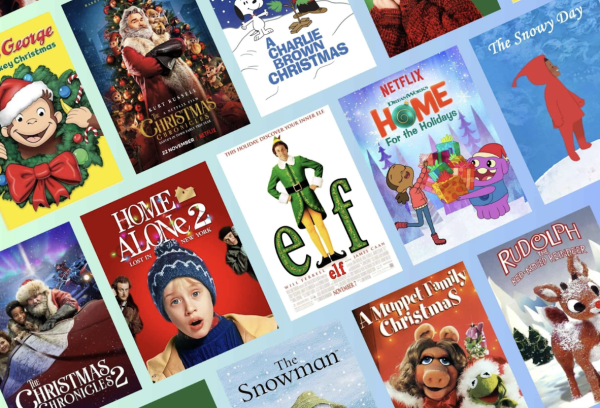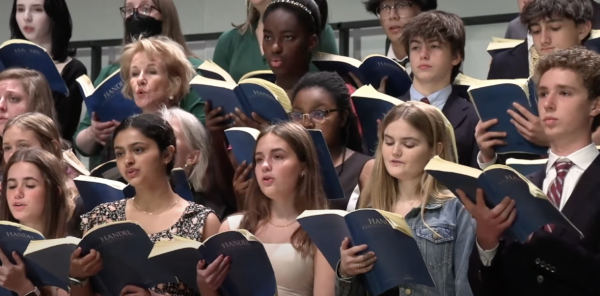Orchestra project advances new learning
On top of preparing for their annual “Messiah” performance that has received school-wide acclaim for years, orchestra students are in the process of an experimental project that combines history, visual arts, music theory, and performance.
The project idea stems from the High Museum’s invitation for musical groups in the Atlanta area to perform at the “Make a Joyful Noise” exhibit, which features Renaissance music and art. Linda Cherniavsky and Scott Stewart, upper school orchestra directors, saw the invitation as an opportunity to expose students to the Renaissance ideals, culture and music in a hands-on project.
During the project, students used a musical notation software program, Sibelius, to transcribe choral pieces called madrigals and motets from the Renaissance into string quartets and quintets. By using the software, students learned how to interpret music by inserting articulation marks and dynamic markings to gain a greater understanding of arrangement of Renaissance music.
“One of the challenges is that the instruments we play today didn’t exist [in the Renaissance],” said Stewart. “If we use music from that time period, we clearly have to transcribe it to change it from its original medium to the contemporary view.”
The style of the music presents a challenge, as the orchestra typically focuses on post-Renaissance music such as baroque, classical, and contemporary.
“This is a risk in many ways because I’m dealing with music that I didn’t know,” said Cherniavsky. “The challenge is going to be making the right sounds with our bows that a singer might make with their voice. Central to the vocal music is the text, and the students need to understand where in a musical line a certain word is said and depicts a certain sentiment.”
The orchestra will perform the music at the High Museum on Nov. 6, followed shortly by the coffee concert on Nov. 21. During the orchestra’s second performance, students will create a visual effect to pair with their playing by creating video slideshows with Renaissance images. Students will also sculpt in order to create objects to resemble Renaissance symbols to project on the screen, creating a layered visual aesthetic.
“There are some exhibits and projects that force the arts and other things together, but this felt really normal to us,” said Stewart. “It is a way to have visual illustration but also to bring some type of authentic performance to the idea of the Renaissance.”
The project fuses history, music theory, music performance, visual arts, and technology as a part of the STEAM initiative, a national movement that has the incentive of combining multiple learning disciplines in the most creative way possible.
“I’ve always been a strong proponent of integrated studies,” said Cherniavsky, “because I think that students have many different strengths. I’m really interested in designing educational experiences that combine different disciplines.”
The approach is hands-on, collaborative, and accommodates a wide range of students and learning styles.
“In teaching and learning, the important thing is to have lots of variety in the way that content and skills are delivered,” said Stewart. “We hope that [the project] is very creative and that it hooks various students and addresses what we’re trying to teach in an interesting, meaningful way.”
The idea of experiencing orchestra class in a different way generated a variety of student responses. Some rejected the idea of interdisciplinary learning, preferring the traditional method of performing pieces written specifically for orchestra to fusion with history and visual art.
“I signed up for orchestra because I like to play,” said an anonymous junior, “not because I like to sculpt.”
Most students had a positive reaction, stressing that certain aspects of the project cater to different learning styles and areas of interest.
“I think it’s really interesting that we’re learning about the Renaissance,” said sophomore Christine Liu. “I’m excited that we’re going to perform our music at the High Museum.”
Students agree that those who enjoy performing in front of a large group of people will get a lot out of the experience and that transcribing the music would be the most dreaded aspect.
“I think that for most people, the downside would be writing your own music,” said sophomore Vivek Garimella, “but that’s part of the experience.”
This project is only the beginning. Orchestra directors anticipate incorporating interdisciplinary learning into the curriculum to continue to encourage the concept of STEAM.
“This is an opportunity for learning for me. This is completely different than any other coffee concert we’ve ever had,” said Cherniavsky. “We probably won’t do this again, but we’ll probably do something like this and develop this in some way in the future.”



